Reports
Anatomy of Iran’s Deception and How Iran Benefited - Iran’s Nuclear Archive Confirms Gchine Uranium and Yellowcake Production Plant were Originally Part of a Clandestine Nuclear Weapons Fuel Cycle. Yet, Gchine never stopped operating.
by David Albright, Olli Heinonen [1] , Frank Pabian [2], and Andrea Stricker
December 19, 2018
For a summary of this report, click here.
Iran’s Nuclear Archive contains considerable new information about its past nuclear weapons program including documentary evidence showing Iran’s deceptions in its declarations to the International Atomic Energy Agency (IAEA) about its past military nuclear activities. This report illustrates one case of deception and the value of the new documentary information, when combined with other existing public documentation, by considering the Gchine uranium mine and yellowcake production plant, or “mill,” located in southern Iran near Bandar Abbas (see Figure 1). The product of Gchine, or alternatively called the Bandar or Bandar Abbas Project, was uranium ore concentrate or yellowcake. Gchine represented key nuclear source material toward Iran’s production of highly enriched uranium (HEU) for nuclear weapons. New documents, not available to the IAEA prior to the seizure of the Nuclear Archive, or alternatively called the Atomic Archive, show concretely that Gchine was originally part of Iran’s covert nuclear fuel cycle aimed at the production of nuclear weapons and directly contradict Iran’s multiple declarations to the IAEA. Moreover, these documents allow a deeper understanding of how Iran carried out its deception.
Contrary to Iran’s claims to the IAEA to date, the archive materials show that before 2003, Gchine was under the control of the Iranian Ministry of Defense and Armed Forces Logistics (MODAFL) and part of the AMAD3 Plan for nuclear weapons development. These documents make clear that Iran lied to the IAEA about the original ownership and intent of the Gchine mine and mill, and that Iran deliberately deceived the IAEA through providing incorrect statements and incomplete documentation. Its action directly contradicted its 2003 statement that it was providing “a full disclosure of Iran’s past and present nuclear activities,” as announced by Hassan Rouhani, then Secretary of the Supreme National Security Council of Iran and now President of Iran.4 Rouhani, importantly, also expressed Iran’s readiness to act “with a policy of full transparency.”5 The transparency policy was included at the IAEA’s insistence in October 2003, and just prior to Iran’s provisional implementation of the Additional Protocol in December 2003, because uranium mining is not subject to the comprehensive safeguards agreement, e.g. the agreement does not require Iran to provide a full history of the operations of uranium mines and mills in its initial declaration to the IAEA. But the special transparency policy undertaken by Iran would apply to uranium mining and milling activities.
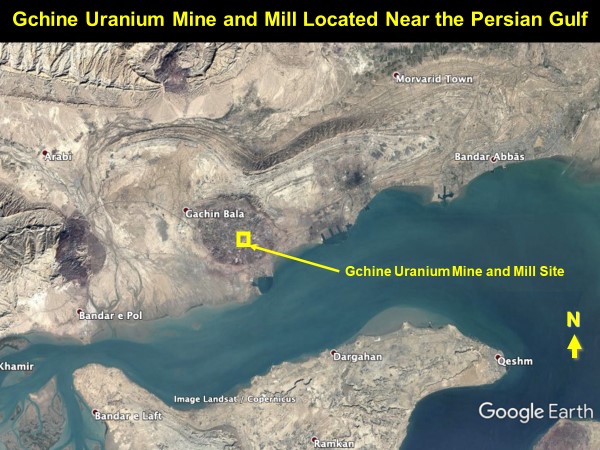
Figure 1. Gchine uranium mine and yellowcake production plant, or mill, in southern Iran.
The archive materials show that Iran transferred control of the Gchine mine and uranium concentration plant to the Atomic Energy Organization of Iran (AEOI) from the AMAD program, in order to provide a semblance of civilian control over the facility in the face of encroaching international inspections and pressure to address the nature of its secret, military-run nuclear weapons program. It also considered several options for an AEOI contractor of Gchine, deciding ultimately on using Kimia Maadan Industrial Group as the “official” AEOI contractor. The timing of the ownership transfer was not coincidental – Iran made its Additional Protocol declarations, which included details about Gchine, to the IAEA on May 21, 2004. As explained in a separate Institute report on the Nuclear Archive, Iran sought to build five nuclear weapons and conduct underground tests by mid-2003, but was interrupted by international revelations of its efforts and fear caused the U.S. invasion of Iraq in 2003, launching a coordinated effort to disperse and hide the most sensitive aspects of its nuclear weapons program.6 Part of this effort was an attempt to keep significant military fuel cycle activities intact, although in the case of Gchine, Iran used overt means and declared it as a civilian facility. Iran’s consistent deception and denials to the IAEA contributed to its success in keeping operational this critical element of its fuel cycle and nuclear weapons capability. At the time, Iran had no other domestic uranium mine close to being operational.
What Nuclear Archive Imagery Shows
The Gchine site (also spelled Gachin in Iranian archive-related documents) is composed of a mine and a uranium ore concentration plant (UOC), alternatively called a yellowcake production plant or mill. Figure 2 is an Institute annotated ground photo of the Gchine UOC that was discovered in the Nuclear Archive. The “other-worldly” terrain in the photo is real, and is due to the unusual salt dome/plug geology of the site.
Iran declared the existence of the Gchine mine and mill to the IAEA in May 2004 during its voluntary implementation of the Additional Protocol, a step required by the Additional Protocol but not the comprehensive safeguards agreement. Nonetheless, this declaration stood in contrast to Iran’s long and well-publicized pronouncements dating as far back as the mid-1990s about the Saghand uranium mine and Ardakan yellowcake production plant that were then under the authority of the AEOI and years from operation. They were not required to be declared under the comprehensive safeguards agreement.7 Nonetheless, Iran was willing to reveal publicly the Saghand and Ardakan uranium mine and mill long before they started operation. It was unwilling to reveal Gchine, even though it was significantly closer to operation and had conducted some initial activity at the site. Iran operated “temporary facilities” at Gchine that were used earlier to produce “several hundred kilograms” of yellowcake by a concentration method called percolation leaching.8
Figure 3 is a commercial satellite image of the Gchine site from August 2002 showing that the newer, permanent plant was nearly complete but was not yet operable as there was no waste present in the waste pond. Note that the original milling building shown in Figures 2 (and close-up in Figure 4) had been subsequently enclosed in Figure 3, confirming that the archive ground photos pre-date August 2002.
Figures 5 and 6 show other ground images from the Nuclear Archive of both the exterior and interior of the Main Processing Building at Gchine yellowcake production plant. Figure 7 provides a satellite image of the Gchine mill from June 8, 2004 showing discoloration from acids, wash, and sludge in the waste tailings pond indicating that initial trial operations had begun by that date.
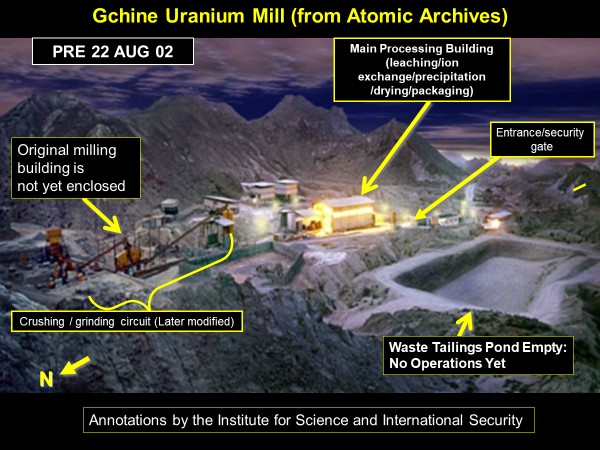
Figure 2. The Gchine yellowcake production plant, or mill, as seen in a photo discovered in the Iran Atomic or Nuclear Archive.
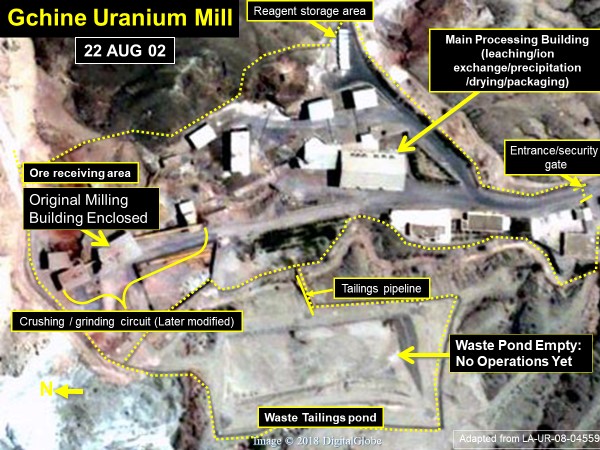
Figure 3. A commercial satellite image of the Gchine uranium mill on August 22, 2002.
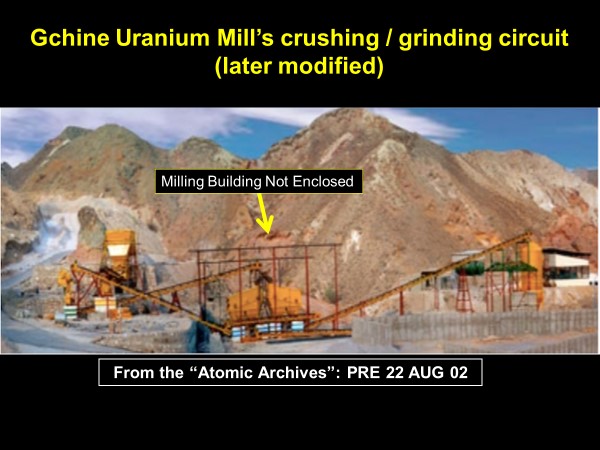
Figure 4. A close-up image from the Nuclear or Atomic Archive showing the milling building before it was enclosed.
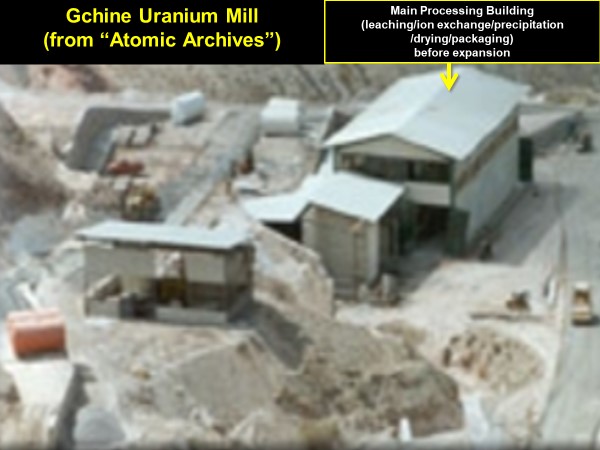
Figure 5. An image from the Atomic Archive showing the main processing building at the Gchine uranium mill before it was expanded.
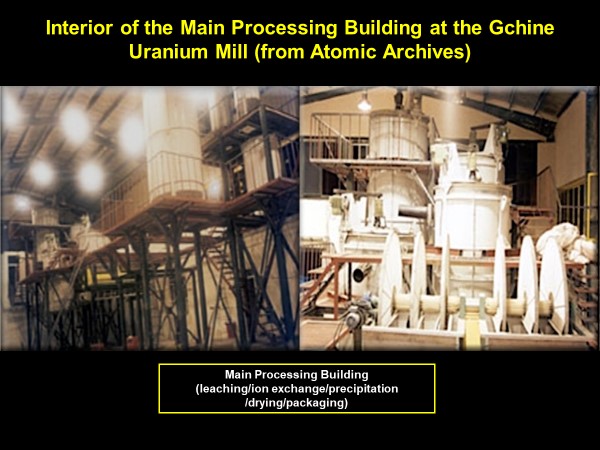
Figure 6. Images from the Nuclear Archive showing the interior of the main building at the Gchine uranium mill.
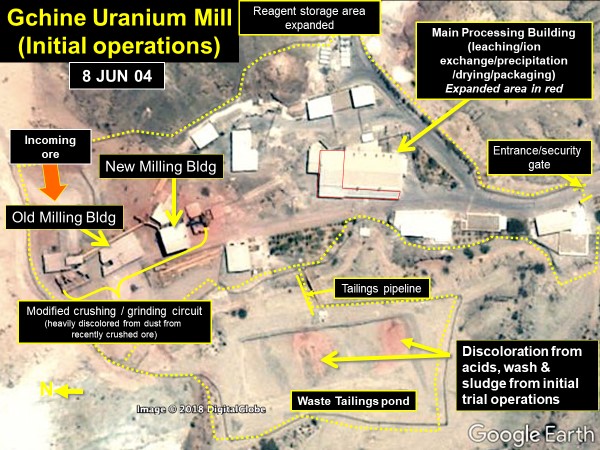
Figure 7. Google Earth satellite image of the Gchine mill on June 4, 2004, showing indications of initial trial operations or “hot testing.”
In its Additional Protocol declarations of May 21, 2004, Iran provided information to the IAEA on the location, operational status, and estimated annual production capacity of the Gchine mine and mill. The IAEA subsequently carried out a complementary access visit at Gchine on July 17, 2004, during the course of which the IAEA was able to confirm the declared status of these operations.9 The IAEA reported in November 2004 that Iran stated to it that the Gchine mine and mill had begun production in July 2004 and would eventually produce 21 tons of uranium per year.10
Iran’s Deception to the IAEA
Following the Gchine mine and mill disclosure, Iran faced on-going questions from the IAEA regarding the ownership of the mine and its relationship to the Iranian military. A summarized description of the IAEA’s discussions with Iran regarding the mine’s provenance and status is contained in the IAEA’s February 2008 Iran safeguards report.11 Iran told the IAEA that “the exploitation of the uranium at the Gchine mine, as well as the ore processing activities at the Gchine uranium ore concentration plant (UOC), have always been and remain the responsibility of the AEOI.”12 In 2008, Iran also gave the IAEA apparently incomplete documentation alleging constant AEOI ownership of Gchine.
Iran stated to the IAEA in February 2008 that the idea for Gchine was established during a five-year plan of 1993-1998, but it claimed that insufficient funds were available to pursue mining at both Saghand and Gchine. Later, the five-year plan of 1999-2003 was agreed to include “funding for further exploration and exploitation at Gchine.” Iran told the IAEA, “A decision to construct a UOC plant at Gchine, known as “Project 5/15,” was made on 25 August 1999.”13
Nuclear Archive Documents Showing Deception
Almost all of these Iranian statements were false. Iran misled the IAEA about Gchine always being the responsibility of the AEOI. Figure 8 from the archive directly contradicts this claim. It is a Power Point presentation title page that discusses a Mineral Ore Concentrate Factory, with an image of Gchine. The presentation was prepared by AMAD Extra-Organizational Plan, the Institute for Training and Research on Defense Industries, MODAFL. As discussed before, AMAD was the code name of Iran’s secret nuclear weapons program at the time. The presentation contained videos showing factory site selection, minerals extraction, grinding and concentrate production, and construction operation. This demonstrates that the Gchine mine was originally owned by MODAFL, and was intended as part of the AMAD plan to produce uranium ore concentrate for the initial steps in Iran’s production of HEU.
Figure 9 contradicts Iran’s claims of continuous civilian ownership of the mine and indicates planning for providing the IAEA with false ownership information and documents that would make the AEOI’s ownership appear longstanding. The document in Figure 9 is a translated record of decisions (original in annex) reached by a senior group of Iranians after an act of the Supreme National Security Council of Iran, with the approval of the head of the AEOI, that discusses this transfer, called “evolution and delivery,” and a declaration to the IAEA of the Bandar Project, an internal Iranian name for the Gchine mine and mill. At the time, Rouhani, Iran’s current president, was head of the National Security Council. The document states that the “process of delivering the above-mentioned project to the Iranian Atomic Energy Organization started on March 18, 2003.” This date is soon after the start of a round of controversial inspections of Iran’s previously undeclared uranium enrichment program that ultimately showed that Iran had violated its safeguards agreement and by extension the Nuclear Non-Proliferation Treaty. The document continues, “the Iranian Atomic Energy Organization would declare the above-mentioned project to the International Atomic Energy Agency as the uranium mine and uranium concentration plant under the supervision of the atomic energy organization.”
The document does not provide the name of the military contractor that was building Gchine for the AMAD project. However, it is quite possible, based on other AMAD projects described in the Nuclear Archive, that this firm would have had an affiliation with the military, including the Iran Revolutionary Guard Corps. In an apparent order designed to create a more convincing cover story, the document states, “It was decided that at the latest April 8, 2004, amongst options suggested by both entities (option of companies affiliated with the [atomic energy] organization, or option of Kimia Madan Industrial Group), atomic energy organization would evaluate all various scenarios about this evolution and delivery in a way that it complies further with agency’s inspection, and announce its opinion to the provider [of option].” Based upon subsequent Iranian declarations, Kimia Maadan was selected to play this cover story role. Kimia Maadan, which was by implication not affiliated with the AEOI, was reportedly the contractor for the AMAD project to build Gchine, making the cover story easier to construct.
The five-year plans discussed by Iran are likely those created by the Iranian nuclear weapons program, where Iran falsely ascribed them to the AEOI. The nuclear weapons program had various multi-year plans for its projects. A table from the Nuclear Archive that discusses the various AMAD plan projects, written in about 2002, lists the start date for a project involving yellowcake production as June 1, 1999, close to the August 1999 date declared by the AEOI as the start of construction of Gchine.
Iran further misled the IAEA since Gchine was never intended for or capable of meeting Iran’s nuclear power reactor requirements. The Institute assessed several years ago that the output of the Gchine mine was inadequate by an order of magnitude to meet the refueling requirements of a single 1,000 MW electric nuclear power reactor such as Bushehr, which would require approximately 250 tonnes of uranium to yield approximately 25 tonnes of low enriched uranium, enough for a single reloading of the reactor’s fuel (the initial fueling would require three times as much).14 Gchine also produced only a fraction of the uranium needed to keep the Esfahan uranium conversion plant operating. Similarly, even adding in the uranium output of the Saghand mine, Iran would still not have enough uranium for anywhere near half of the annual requirements of the Bushehr reactor. However, the output of the Gchine mine is adequate for a nuclear weapons program based on highly enriched uranium.15 Such a program needs far less yellowcake than a commercial nuclear power program.
The documents in the archive establish that Iran consistently misled the IAEA about Gchine and built it for use in a covert nuclear fuel cycle aimed at nuclear weapons production.
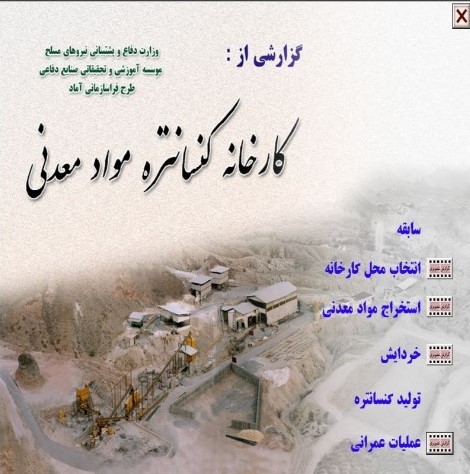

Figure 8. Title page of Iranian presentation on Gchine in Farsi (top) and translation by professional translation service (bottom) shows an image of the Gchine site on the cover of a report prepared under the the AMAD Supraorganizational Plan of MODAFL’s Institute for Training and Research of Defense Industries. This institute is also known as the Defense Industries Training and Research Institute or Training and Research Institute of Defense Industries.
Figure 9. A page from a translated record of decisions of a senior group of Iranians following an act of the Supreme National Security Council of Iran, then chaired by current Iranian president Hassan Rouhani, and its approval by the then-head of the AEOI, indicating plans to transfer a semblance of ownership of the Gchine mine and mill from the military to the AEOI, and to make it appear longstanding to the IAEA. The page is from a three-page document on this decision. Prior to this decision, Gchine was under the control of the AMAD program under the Ministry of Defense and Armed Forces Logistics. Engineer Gholam Reza Aghazadeh at the time was head of the AEOI. The original page in Farsi is in an annex to this report.
Comments
* The correct clause of the Additional Protocol is 2. a. (v).
* * Delayed until May 21, 2004.
What the IAEA Concluded Prior to the Nuclear Archive Revelations
What did the IAEA know, and what did it assess about Gchine? The Gchine site attracted IAEA skepticism for several reasons. However, faced with Iran’s persistent denials and deception and suffering from lack of evidence, the IAEA hesitated to conclude publicly or explicitly state with confidence to the Board of Governors that Gchine was part of a nuclear weapons program, in particular part of the AMAD plan. It did not state clearly that Iran was being deceptive about Gchine. Nonetheless, the IAEA accumulated a considerable body of evidence that, in hindsight, was compelling. At least internally, its safeguards staff understood that Gchine was likely built originally to be part of the AMAD plan.
One set of suspicions centered on the site’s secrecy. Although as discussed above Iran did not have to declare the Gchine mine under its comprehensive safeguards agreement, its October 2003 transparency policy discussed above led to expectations that secret, or previously unknown nuclear sites, would be declared. Iran did not disclose the Gchine mine or mill to the IAEA in November 2003 when it initially reported its fuel cycle activities to the IAEA (the IAEA’s November 2003 report contains a detailed list of facilities and sites associate with the nuclear fuel cycle in Iran, but makes no mention of Gchine, or the Bandar site, as it was called by internal Iranian documents).16 It waited to declare the site until 2004 as part of its Additional Protocol declarations, even though, as discussed above, it had already operated the site.17 Moreover, Iran had not listed Gchine in a well-known biannual nuclear industry compendium that includes all uranium mines worldwide, colloquially known as the “Red Book,” until after 2004.18 A check in the field of uranium mining and milling of the 2001 and 2003 Red Books, the latter being the last one before the IAEA revealed this site in 2004, contains no uranium mining or milling entries for the Gchine area or its province Hormozgan, although uranium in other areas was listed. There is only a general reference to uranium deposits being near Gchine and in the province Hormozgan in the National Geoscience Database of Iran. A mine, called Mine M_26_13, is located at the same location as the Gachin Uranium Mill but it is listed only as the Sandrasang mine near the village of Gachin, and for the purposes of quarrying “Building Stone” and not uranium.19 The consistent lack of statements or declarations typical of civilian uranium mines and mills increased suspicion about Gchine’s original purpose.
The IAEA obtained information from member states and other sources that suggested that Gchine was intended to be used to produce uranium for undeclared fuel cycle activities. According to the 2015 IAEA report on the possible military dimensions of Iran’s nuclear program:
Information available to the Agency prior to November 2011 indicated that the Gchine mine was a potential source of uranium for use in undeclared nuclear activities in the period 2000-2003.20 (emphasis added)
The IAEA also learned of a project indicating that undeclared uranium oxide would be further refined to make “green salt,” or uranium tetrafluoride that can be further refined into uranium hexafluoride for use in a gas centrifuge plant or uranium metal for use in nuclear weapons components. This information suggests that Gchine was part of a parallel, secret fuel cycle program. According to the 2015 IAEA report:
The information also indicated that preliminary activities, including the ‘green salt project’, were undertaken at an unknown location and were aimed at the production of uranium salts that would have been suitable either for conversion into material for uranium enrichment or into material for the direct reduction of uranium salts to pure uranium metal.21 (emphasis added)
Iran told the IAEA that Kimia Maadan was a private company working for the AEOI that was involved in developing and building Gchine, but this information is now suspect (see figure 9). Iran told the IAEA that the company employed some 100 people and that its primary task at Gchine was to undertake the “detailed design, to procure and install equipment and to put the Gchine UOC plant into operation.”22 Kimia Maadan was in fact responsible for the planning and operation of Gchine on behalf of the Ministry of Defense and Armed Forces Logistics and was used to conceal the connection between Gchine and MODAFL after the National Security Council decided to make it appear that Gchine was always an AEOI facility (see Figure 9). Iran may have produced incomplete or even falsified documentation to substantiate this duplicitous claim.
The IAEA also received a set of secret illicit procurement telexes, or early electronic communications, dating to the 1990s that originated mostly from the Physics Research Center (PHRC), a predecessor of the AMAD project. These telexes show that PHRC had an interest in creating a secret uranium mining capability that stretched back to at least the early 1990s. The Institute was provided this set of telexes in 2011, which it confirmed involved a set of illicit procurements by a range of Iranian nuclear departments.23 Department 5 telexes were assessed by Institute experts as related to uranium mining.24 (The Gchine project, started in 1999 was known as Project 5/15, where the “five” could have been derived from Department 5).25 These telexes were sent from late 1990 into early 1993, with most occurring in 1991 and 1992. They are mainly from the PHRC, although several are from Sharif University, a well-known procurement front for the PHRC.
One telex to a supplier discusses a feasibility study for uranium, copper, and vanadium mines and the need for analyzing these elements. It goes on to discuss possible equipment needs for analyzing the concentration of U3O8 in ore. On the whole, the goods sought were principally related to conducting geological surveys for uranium or other minerals rather than mining itself. One exception was an inquiry from Sharif University to Outokumpu Electronics for a “courier online X-ray analyzer,” which could be used in a production process to assay elements in slurries (telex 753). This telex has the pattern, which is common in the telexes, of stating that the inquiry comes from Sharif University but asks for a response to a PHRC fax number. The goods are unlikely to have been for the AEOI’s Saghand mine and mill, which the AEOI was already developing during that period. According to Iranian statements to the IAEA, by 1989, Iran had established the extent of uranium reserves at Saghand in central Iran in cooperation with Chinese experts.26 In 1995, Iran signed a contract with Russia for equipping the Saghand mine and designing a uranium ore processing plant. Another of the telexes is a letter of credit from Iran’s AEOI to Russia about paying up to $2.45 million for the elaboration of a process flow sheet and design documentation for the construction of uranium ore processing in Saghand and about detail design for construction of a mine in Saghand (telex 1569). Missing from this telex are any of the familiar references to PHRC or Sharif University, making it likely that the Saghand uranium mine project was in fact under the AEOI and operating in parallel to the secret military uranium mine effort under development.
The telexes support that the AEOI was not responsible for the Gchine mine until much later, and that the PHRC, a military organization in 1991 and 1992, was putting together the beginnings of the Gchine mine in a parallel program to the AEOI that grew to fruition under the AMAD program.
Iran’s On-Going Denials and IAEA’s Indecision
Iran’s reaction to this body of evidence was essentially to steadfastly deny the IAEA’s allegations about the ownership and nature of Gchine. Iran provided extensive supporting, albeit deceptive, documentary information to back up its claims. There were also a few senior IAEA officials and member states who sought to discount the evidence. Given that some of the IAEA’s key information was subject to challenge or interpretation, it did not take a tough position with Iran on the issue of Gchine. Instead, the IAEA stated in its February 2008 safeguards report:
Much of the supporting information provided by Iran had not been presented to the Agency during past discussions about Gchine. The Agency concluded that the information and explanations provided by Iran were supported by the documentation, the content of which is consistent with the information already available to the Agency. The Agency considers this question no longer outstanding at this stage. However, the Agency continues, in accordance with its procedures and practices, to seek corroboration of its findings and continues to verify this issue as part of verification of the completeness of Iran’s declarations.27
But the report did not bring the Gchine saga to closure, stating, “However, the Agency continues, in accordance with its procedures and practices, to seek corroboration of its findings and continues to verify this issue as part of verification of the completeness of Iran’s declarations.” 28
The IAEA has not issued a different assessment since 2008.
Findings and Recommendations
The evidence in the Nuclear Archive is concrete and leaves little doubt that Iran misled the IAEA about the role of the Gchine uranium mine and yellowcake production plant in Iran’s nuclear weapon plans. Particularly troubling is Iran’s misleading statements and provision of incomplete documentation leading up to the IAEA concluding in its February 2008 safeguards report that key questions about Gchine were no longer outstanding.
The Nuclear Archive materials show that after the exposure of Iran’s numerous secret nuclear sites in the period of 2002 to 2004, Iran transferred ownership of the Gchine uranium mine and mill to the AEOI and relabeled the site a civilian uranium site. Iran concealed the original purpose and true ownership of the Gchine site and provided incomplete documentation about it, in breach of its undertakings with the IAEA to be transparent. The site was originally part of the AMAD plan to produce nuclear weapons. It was military-owned and created to produce uranium for Iran’s covert nuclear fuel cycle and five initially-planned nuclear weapons. Gchine is but another egregious example of Iran’s deceptions to the IAEA and the international community.
For many, it was sufficient that the Gchine mine and mill was officially declared and subject to IAEA visits. However, what this meant was that Iran succeeded in simply renaming a military uranium mine a civilian one, and in the process, preserved its capability to produce uranium for a nuclear weapons program in the future while hiding and continuing this weapons program. For many years, until 2013 when the Saghand mine finally and formally opened, Iran had no other, major domestic source of uranium.29 Keeping Gchine operational was therefore imperative for Iran. That no way was found to shutter the Gchine mine, as freezes in Iranian enrichment and reprocessing were instituted in 2003 and 2004, has to be viewed in hindsight as a dangerous loophole. That the Joint Comprehensive Plan of Action (JCPOA) likewise did not limit operations at Gchine or other uranium production sites, but merely subjected them to more rigorous monitoring, also represents a flaw in the nuclear deal.
As in many other cases of Iran’s secret, undeclared nuclear weapons efforts, openness was not consistently demanded but instead deception and concealment were tolerated and, in many ways, rewarded. In addition to setting a dangerous norm, one has to continually ask what else about its nuclear program Iran is lying about. This case sets a negative precedent for future proliferant states and shows that complex deception efforts can pay off to preserve and extend nuclear weapons capabilities. Preventing North Korea, and perhaps in the future Saudi Arabia, from following in Iran’s footsteps will be a major challenge for the international community, and in particular, for the United States.
Looking back, despite lacking a smoking gun and the evidence being weak, the IAEA safeguards team assessed correctly, albeit only internally, that Gchine had been part of a military nuclear weapons program. Although the IAEA stated publicly that it had not closed this issue, the failure of the IAEA to state its internal conclusion publicly in a safeguards report or to the Board of Governors is a lesson in how the IAEA has a difficult time adequately establishing non-compliance against a backdrop of strenuous denials and obfuscation by the violating state and its powerful allies. Member states are historically reluctant to demand disclosure and clarity on specific cases, particularly since Gchine was just one of many cases that were part of Iran’s undeclared nuclear weapons efforts at that time. Moreover, as time progressed, and no resolution on these issues was achieved, fatigue among member states set in. Sometimes, “champions” emerged to lead an effort against Iran’s on-going denials about its past and possibly on-going nuclear weapons projects. But these champions did not show an ability to sustain their efforts, and often these efforts were diluted in negotiations. With the advent of the JCPOA, the IAEA has been discouraged from pursuing these issues, hearing from Iran and Russia that somehow these cases have been closed, or from others that pursuit would jeopardize the JCPOA. The hope is that the United States will once again emerge as a leader in demanding Iranian openness, in the Board of Governors and elsewhere.
A sobering fact is that the issue of Iran’s past and possibly on-going nuclear weapons work is still unresolved. Some try to discount this issue by adopting the stance that everything is known anyway, or that the worst should be assumed and move forward, but the Nuclear Archive makes readily apparent that much remains unknown. In particular, this information matters with regard to any past nuclear weapons effort continuing today. In the end, the reason to insist on Iran fully declaring its nuclear programs concerns the health of, and compliance of Iran with provisions of the Nuclear Non-Proliferation Treaty, its comprehensive safeguards agreement, the Additional Protocol, and the JCPOA. This issue festers and raises fundamental questions about the value of these agreements to stop nuclear proliferation and the ability of the IAEA to conduct credible verification. In addition, the JCPOA is not a permanent agreement. Its provisions will end, leaving Iran well-placed to resume building up its nuclear breakout capability, with an apparently ready military nuclear effort to draw on from the archive it maintains. It could also trade this information to other states or groups, as it has done with missile technology.
At a minimum, if a successor or replacement for the JCPOA is contemplated, any new nuclear deal should go beyond achieving stricter limits on uranium enrichment and reprocessing than those in the JCPOA today. It should include sharp limits on Iran’s natural uranium production and strict limits on Iran’s supply of natural uranium to far below that needed for a nuclear weapons program or to amounts clearly justified for civil nuclear energy. Toward that end, the IAEA should use the Additional Protocol to confirm the absence of undeclared uranium extraction at sites in Iran.
The IAEA Board of Governors should pass a resolution that states that Iran deceived the IAEA and filed inaccurate and incomplete declarations under the comprehensive safeguards agreement and the Additional Protocol. Clearly, in light of the information now available from the Nuclear Archive, it is time for the IAEA to intensify its inquiry regarding the military aspects of Iran’s nuclear program and ensure that Iran has a strictly peaceful nuclear program.
Annex: Original Page in Farsi of minutes of decisions translated in Figure 9.
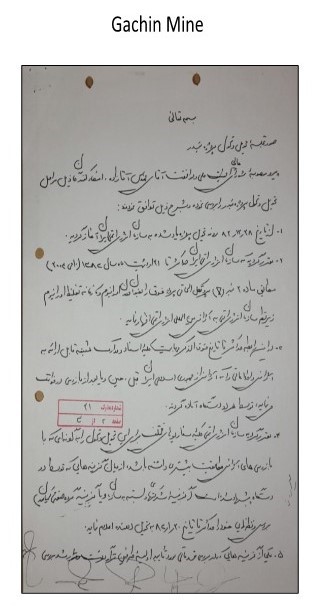
[1] Olli Heinonen is Former Deputy Director General of the IAEA and head of its Department of Safeguards. He is a Senior Advisor on Science and Nonproliferation at the Foundation for Defense of Democracies.
[2] Frank Pabian is a retired Los Alamos National Laboratory (LANL) Fellow from both the Global Security and Science-Technology-Engineering Directorates, most recently in the Geophysics Group, Earth and Environmental Sciences Division, with 45 years of experience in satellite remote sensing for nuclear nonproliferation. He also served in the 1990s as a United Nations Nuclear Chief Inspector in Iraq for the IAEA.
3. AMAD is a transliteration of a Persian word meaning logistics. Despite being capitalized, it does not appear to be an acronym. ↩
4. IAEA Director General, Implementation of the NPT Safeguards Agreement in the Islamic Republic of Iran, November 10, 2003, GOV/2003/75, para 13. See also paragraph 15. A letter to the Director General of the IAEA dated October 21, 2003 from Gholam Reza Aghazadeh, Vice President of the Islamic Republic of Iran and President of the Atomic Energy Organization of Iran, reaffirmed that “the Islamic Republic of Iran ha[d] decided to provide a full picture of its nuclear activities, with a view to removing any ambiguities and doubts about the exclusively peaceful character of these activities and commencing a new phase of confidence and co-operation in this field at the international level.” Mr. Aghazadeh stated further in his letter that Iran was prepared “to provide, in full transparency, any additional clarifications that the Agency may deem necessary.” ↩
5. Ibid. ↩
6. Albright, Heinonen, and Stricker, “Breaking Up and Reorienting Iran’s Nuclear Weapons Program - Iran’s Nuclear Archive Shows the 2003 Restructuring of its Nuclear Weapons Program, then called the AMAD Program, into Covert and Overt Parts,” Institute for Science and International Security and Foundation for the Defense of Democracies, October 29, 2018, http://isis-online.org/isis-reports/detail/breaking-up-and-reorienting-irans-nuclear-weapons-program; ; Albright, Heinonen, and Stricker, “The Plan: Iran’s Nuclear Archive Shows it Planned to Build Five Nuclear Weapons by mid-2003,” Institute for Science and International Security and Foundation for the Defense of Democracies, November 20, 2018, http://isis-online.org/isis-reports/detail/the-plan-irans-nuclear-archive-shows-it-originally-planned-to-build-five-nu ↩
7. On Saghand and Ardakan, see Albright, Jacqueline Shire, and Paul Brannan, “Is Iran Running Out of Yellowcake?” Institute for Science and International Security, February 11, 2009, https://isis-online.org/uploads/isis-reports/documents/Iran_Yellowcake_11Feb2009.pdf ↩
8. IAEA Director General, Implementation of the NPT Safeguards Agreement in the Islamic Republic of Iran, GOV/2004/83, November 15, 2004, http://www.isisnucleariran.org/assets/pdf/iaea-iranreport-111504.pdf. The IAEA noted that Iran had used the percolation leaching technique to produce “an estimated several hundred kilograms of yellowcake using temporary facilities, now dismantled, located at the Gchine mining site.” ↩
9. Implementation of the NPT Safeguards Agreement in the Islamic Republic of Iran, GOV/2004/83, November 15, 2004; and IAEA Director General, Implementation of the NPT Safeguards Agreement in the Islamic Republic of Iran, GOV/2004/60, September 1, 2004, https://www.iaea.org/sites/default/files/gov2004-60.pdf ↩
10. In the November 15, 2004 IAEA Report to the Board of Governors, operations at the Gchine mine and mill were described: The low but variable grade uranium ore found in the near-surface deposits will be open-pit mined and processed at the associated mill. The estimated production design capacity is 21 t of uranium per year. Iran has stated that, as of July 2004, mining operations had started and the mill had been hot tested, during which testing a quantity of about 40 to 50 kg of yellowcake was produced. ↩
11. IAEA Director General, Implementation of the NPT Safeguards Agreement in the Islamic Republic of Iran, GOV/2008/4, February 22, 2008, http://www.isisnucleariran.org/assets/pdf/IAEA_Report_22Feb2008.pdf. ↩
12. Ibid. ↩
13. Ibid. ↩
14. David Albright, Jacqueline Shire, and Paul Brannan, “Is Iran Running Out of Yellowcake?” Institute for Science and International Security, February 11, 2009, https://isis-online.org/uploads/isis-reports/documents/Iran_Yellowcake_11Feb2009.pdf. ↩
15. Twenty tonnes of uranium is enough to produce enough weapon-grade uranium for one to two nuclear weapons a year, thus in conformity with the AMAD requirement to make five nuclear weapons in about three to four years. ↩
16. IAEA Director General, Implementation of the NPT Safeguards Agreement in the Islamic Republic of Iran, GOV/2003/75, November 10, 2003, http://www.isisnucleariran.org/assets/pdf/iaea-iranreport-111003.pdf. ↩
17. IAEA Director General, Final Assessment on the Past and Present Outstanding Issues Regarding Iran’s Nuclear Programme, GOV/2015/68, December 2, 2015, http://isis-online.org/uploads/isis-reports/documents/IAEA_PMD_Assessment_2Dec2015.pdf. ↩
18. The Red Book is published jointly by the IAEA and Nuclear Energy Agency of the Organization for Economic Cooperation and Development (OECD). See, for example, the 2016 edition: https://www.iaea.org/newscenter/pressreleases/new-edition-of-red-book-uranium-report-is-published. ↩
19. Frank Pabian, “Evidence from Imagery: The Iran and Syrian Nuclear Programs - An Open & Shut Case?” LA-UR-08-04559 (New Mexico: Los Alamos National Laboratory, October 28, 2008). ↩
20. IAEA Director General, Final Assessment on Past and Present Outstanding Issues regarding Iran’s Nuclear Programme, GOV/2015/68, December 2, 2015, https://www.iaea.org/sites/default/files/gov-2015-68.pdf. ↩
21. Ibid. ↩
22. Implementation of the NPT Safeguards Agreement in the Islamic Republic of Iran, GOV/2008/4, February 22, 2008. ↩
23. See Institute web site page, PHRC Documents, http://isis-online.org/phrc ↩
24. David Albright, Paul Brannan, and Andrea Stricker, The Physics Research Center and Iran’s Parallel Military Nuclear Program, Institute for Science and International Security, February 23, 2012, http://isis-online.org/uploads/isis-reports/documents/PHRC_report_23February2012.pdf. ↩
25. Implementation of the NPT Safeguards Agreement in the Islamic Republic of Iran, GOV/2008/4, February 22, 2008, p. 5. ↩
26. Ibid. ↩
27. Implementation of the NPT Safeguards Agreement in the Islamic Republic of Iran, GOV/2008/4, February 22, 2008. ↩
28. Ibid. ↩
29. There is a new ore concentration plant in operation in the Talmesi-Meskani mining area, which is historically known as having uranium deposits located adjacent to the AEOI-operated Anarak radioactive waste storage site. The IAEA should undertake an onsite complementary access, or at minimum, ask what happens with uranium in the processed sludge in the course of refining high purity copper. ↩

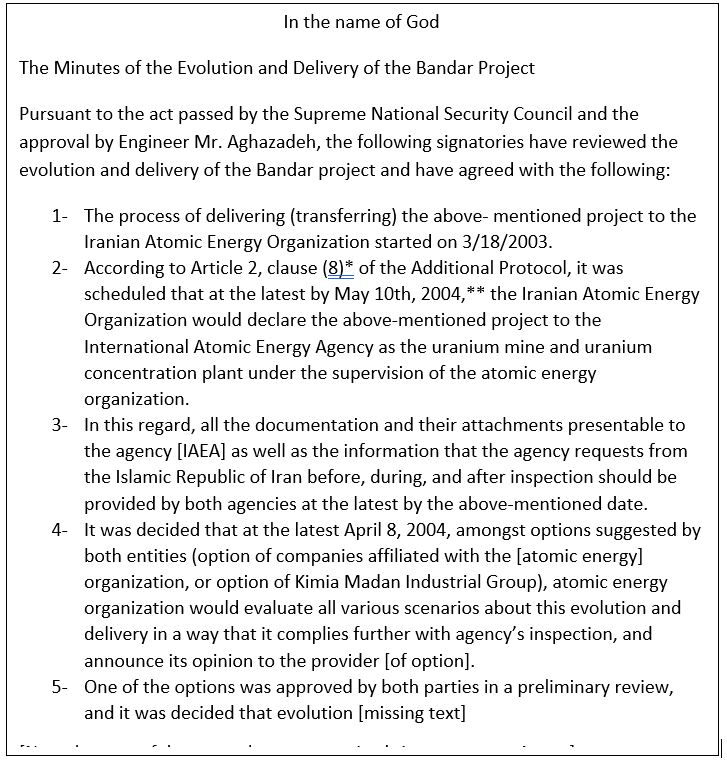
 twitter
twitter